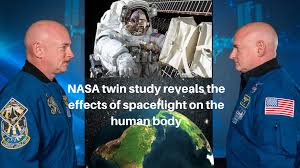
Breaking News
Chicago Homicide Rate: 2025 Analysis
 Tennessee Sues Roblox, Says Game is a 'Gateway for Predators' Targeting Children
Tennessee Sues Roblox, Says Game is a 'Gateway for Predators' Targeting Children
 Kushner and Witkoff Reportedly Draft $112B Plan to Turn Gaza Into 'Smart City'...
Kushner and Witkoff Reportedly Draft $112B Plan to Turn Gaza Into 'Smart City'...
 Christmas in Venezuela: What It Was Like After Socialism Destroyed the Country
Christmas in Venezuela: What It Was Like After Socialism Destroyed the Country
Top Tech News
 Perfect Aircrete, Kitchen Ingredients.
Perfect Aircrete, Kitchen Ingredients.
 Futuristic pixel-raising display lets you feel what's onscreen
Futuristic pixel-raising display lets you feel what's onscreen
 Cutting-Edge Facility Generates Pure Water and Hydrogen Fuel from Seawater for Mere Pennies
Cutting-Edge Facility Generates Pure Water and Hydrogen Fuel from Seawater for Mere Pennies
 This tiny dev board is packed with features for ambitious makers
This tiny dev board is packed with features for ambitious makers
 Scientists Discover Gel to Regrow Tooth Enamel
Scientists Discover Gel to Regrow Tooth Enamel
 Vitamin C and Dandelion Root Killing Cancer Cells -- as Former CDC Director Calls for COVID-19...
Vitamin C and Dandelion Root Killing Cancer Cells -- as Former CDC Director Calls for COVID-19...
 Galactic Brain: US firm plans space-based data centers, power grid to challenge China
Galactic Brain: US firm plans space-based data centers, power grid to challenge China
 A microbial cleanup for glyphosate just earned a patent. Here's why that matters
A microbial cleanup for glyphosate just earned a patent. Here's why that matters
 Japan Breaks Internet Speed Record with 5 Million Times Faster Data Transfer
Japan Breaks Internet Speed Record with 5 Million Times Faster Data Transfer
NASA's twin study shows how space travel affects genes, cognition, aging and gut microbiome

To investigate the extent of those changes, NASA conducted a comprehensive study comparing the genes and biology of identical twins Scott and Mark Kelly, after Scott spent almost a year in space while Mark stayed on Earth as a control. And now the results of that study have finally been released.
As part of the study, Scott lived on the International Space Station for 340 days over 2015 and 2016, while his brother, also a retired astronaut, went about his regular life on the ground. The idea, of course, is that because twins share 100 percent of their genetic makeup, they're a great window into the effects of the space environment on the human body.
In this case, 10 research teams intensely studied different aspects of the Kelly brothers' physiology during the spaceflight and for six months after Scott's return to Earth.

 Advanced Propulsion Resources Part 1 of 2
Advanced Propulsion Resources Part 1 of 2

